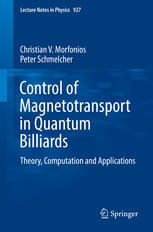

Most ebook files are in PDF format, so you can easily read them using various software such as Foxit Reader or directly on the Google Chrome browser.
Some ebook files are released by publishers in other formats such as .awz, .mobi, .epub, .fb2, etc. You may need to install specific software to read these formats on mobile/PC, such as Calibre.
Please read the tutorial at this link. https://ebooknice.com/page/post?id=faq
We offer FREE conversion to the popular formats you request; however, this may take some time. Therefore, right after payment, please email us, and we will try to provide the service as quickly as possible.
For some exceptional file formats or broken links (if any), please refrain from opening any disputes. Instead, email us first, and we will try to assist within a maximum of 6 hours.
EbookNice Team

Status:
Available4.7
15 reviewsIn this book the coherent quantum transport of electrons through two-dimensional mesoscopic structures is explored in dependence of the interplay between the confining geometry and the impact of applied magnetic fields, aiming at conductance controllability.
After a top-down, insightful presentation of the elements of mesoscopic devices and transport theory, a computational technique which treats multiterminal structures of arbitrary geometry and topology is developed. The method relies on the modular assembly of the electronic propagators of subsystems which are inter- or intra-connected providing large flexibility in system setups combined with high computational efficiency. Conductance control is first demonstrated for elongated quantum billiards and arrays thereof where a weak magnetic field tunes the current by phase modulation of interfering lead-coupled states geometrically separated from confined states. Soft-wall potentials are then employed for efficient and robust conductance switching by isolating energy persistent, collimated or magnetically deflected electron paths from Fano resonances. In a multiterminal configuration, the guiding and focusing property of curved boundary sections enables magnetically controlled directional transport with input electron waves flowing exclusively to selected outputs. Together with a comprehensive analysis of characteristic transport features and spatial distributions of scattering states, the results demonstrate the geometrically assisted design of magnetoconductance control elements in the linear response regime.